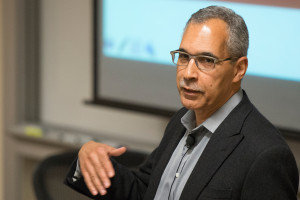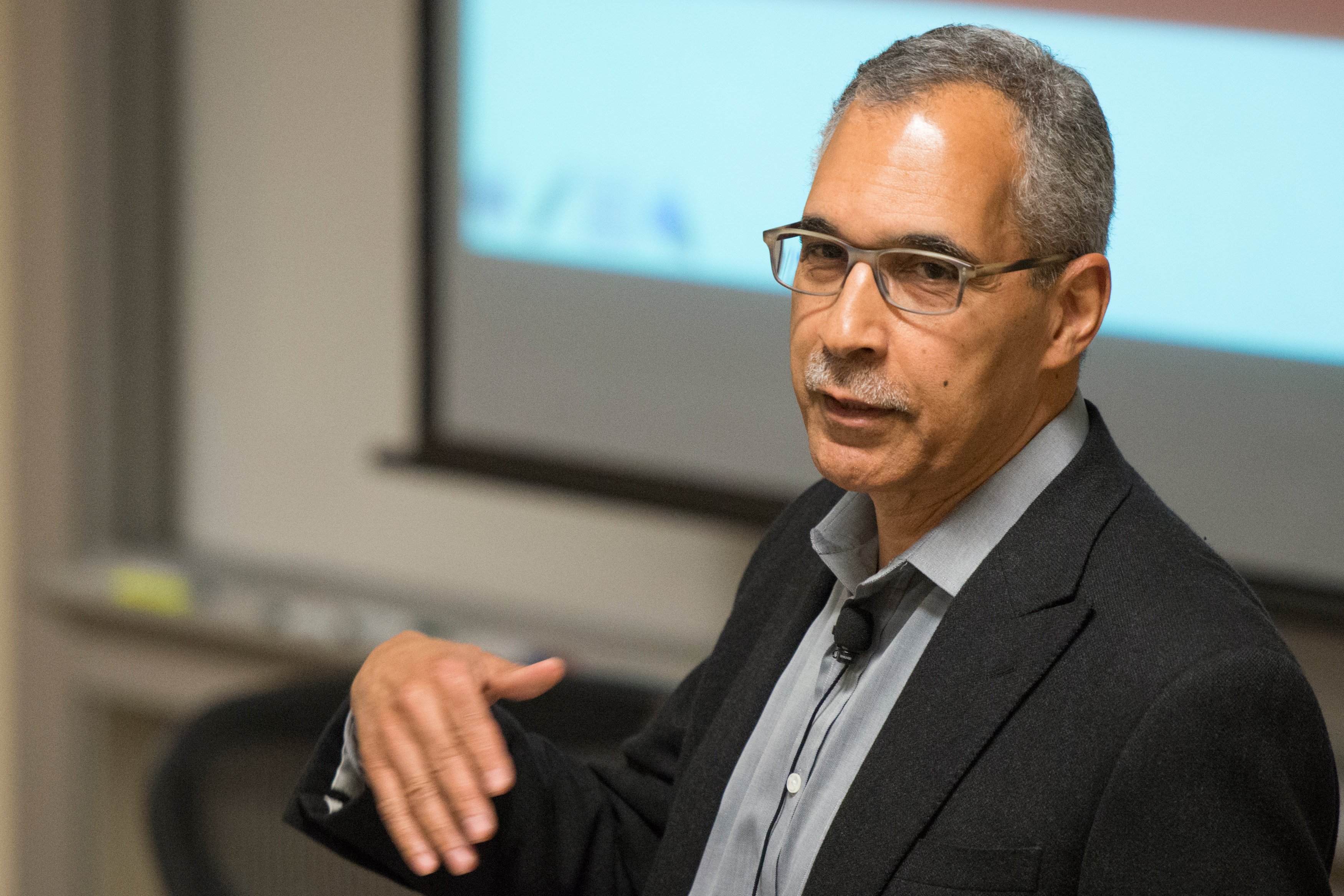
The Faculty Senate heard reports from Vice Provost for Graduate Education Patricia Gumport M.A. ’82 M.A. ’86 Ph.D. ’87 and Dean of the Graduate School of Education Claude Steele at its meeting Thursday.
Senate Chair Raymond Levitt, professor of civil and environmental engineering, opened the meeting by noting that Senate discussion of a proposal to substantially adjust course scheduling and class starting times would be postponed until May in an effort to promote further discussion of the contentious changes.
That delay will mean that the proposed changes, if approved by the Faculty Senate, would not be implemented until the 2014-15 academic year.
Gumport opened her presentation by identifying three significant challenges for the University as a whole—graduate student funding, graduate population diversity and preparing doctoral students for a range of career paths—and acknowledging the inherent limitations of the Office of the Vice Provost of Graduate Education’s efforts to address those issues.
“We are really decentralized,” Gumport said. “It’s difficult to resolve challenges that transcend departments. Some of the challenges we face are exacerbated by our decentralized structure.”
Reviewing the funding sources available to graduate students, Gumport acknowledged the potential for current and prospective reductions in federal spending to cut into student support through mediums like research assistantships.
“At all levels of the University, we’re feeling some stress and anxiety [about federal funding],” Gumport said, later emphasizing that “our top priority is to meet our current funding commitment to students.”
She emphasized, however, the diminished significance of external funding for graduate students as a whole. While external grants and contracts provided 37 percent of a total of $143.4 million in graduate student funding in fiscal year 1998, that proportion has fallen to 30 percent of a total of $309.2 million for the current fiscal year. The proportion provided by the University’s designated and restricted funds rose from 23 percent to 43 percent of the total over that same period.
“It reduces the vulnerability of graduate student funding to fluctuations in outside sources,” Gumport said. “We were relieved to see that.”
Gumport also announced a recent decision by Provost John Etchemendy Ph.D. ’82 to increase the proportion of graduate student research assistants’ support that comes from University general funds from 35 to 40 percent, framing the move as a means of alleviating pressure on faculty to find funding sources.
Turning to the challenge of fostering diversity within the graduate student population, Gumport emphasized the University’s focus on increasing diversity within specific academic departments rather than necessarily within the population as a whole.
While she cited increases in gender equality and in international graduate student numbers as substantial accomplishments for the University, Gumport acknowledged that progress for other groups—such as under-represented minorities (URM)—has lagged behind. While the absolute number of URM graduate students increased from 1995 to 2012, the proportion of the student body composed of URM students fell from 10.7 to 9.3 percent over the same period.
Gumport highlighted diversity initiatives currently under way but also encouraged faculty to assume a prominent and extensive role in opportunities like mentoring students.
“This isn’t just for students who might be URM or women,” Gumport said. “These are great practices for all students…There’s a lot we can do as faculty…This is really a time for us to step up.”
In his report, Steele focused on the Graduate School of Education’s (GSE) broader impact, drawing attention to the importance of education to the broader economy and the current struggles within the American education system.
“We can make education smarter, in all of its aspects,” Steele asserted.
Steele emphasized the ability of the GSE—whose faculty has consistently been ranked first in the nation by the U.S. News and World Report—to leverage technology and data-driven research to make substantial advances through means like video game-based learning.
“They provide a huge opportunity to make education smarter,” Steele reiterated.
Steele also drew attention to the GSE’s burgeoning partnership with the San Francisco Unified School District, which he hopes to apply to other cities like Oakland or San Jose.
“We have some encouraging indications that this kind of partnership…can have an effect on the overall system,” Steele said.
Reviewing the years ahead, Steele focused on the GSE’s conceptual plan for an education clinic and the broader objectives of advancing education technology, expanding the amount of quality education offered to low-income students and developing a new platform to advance and disseminate education research and training.
